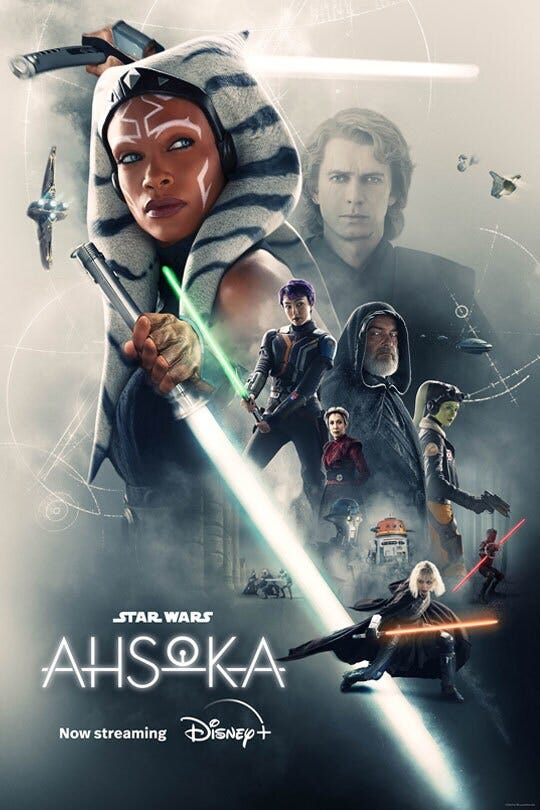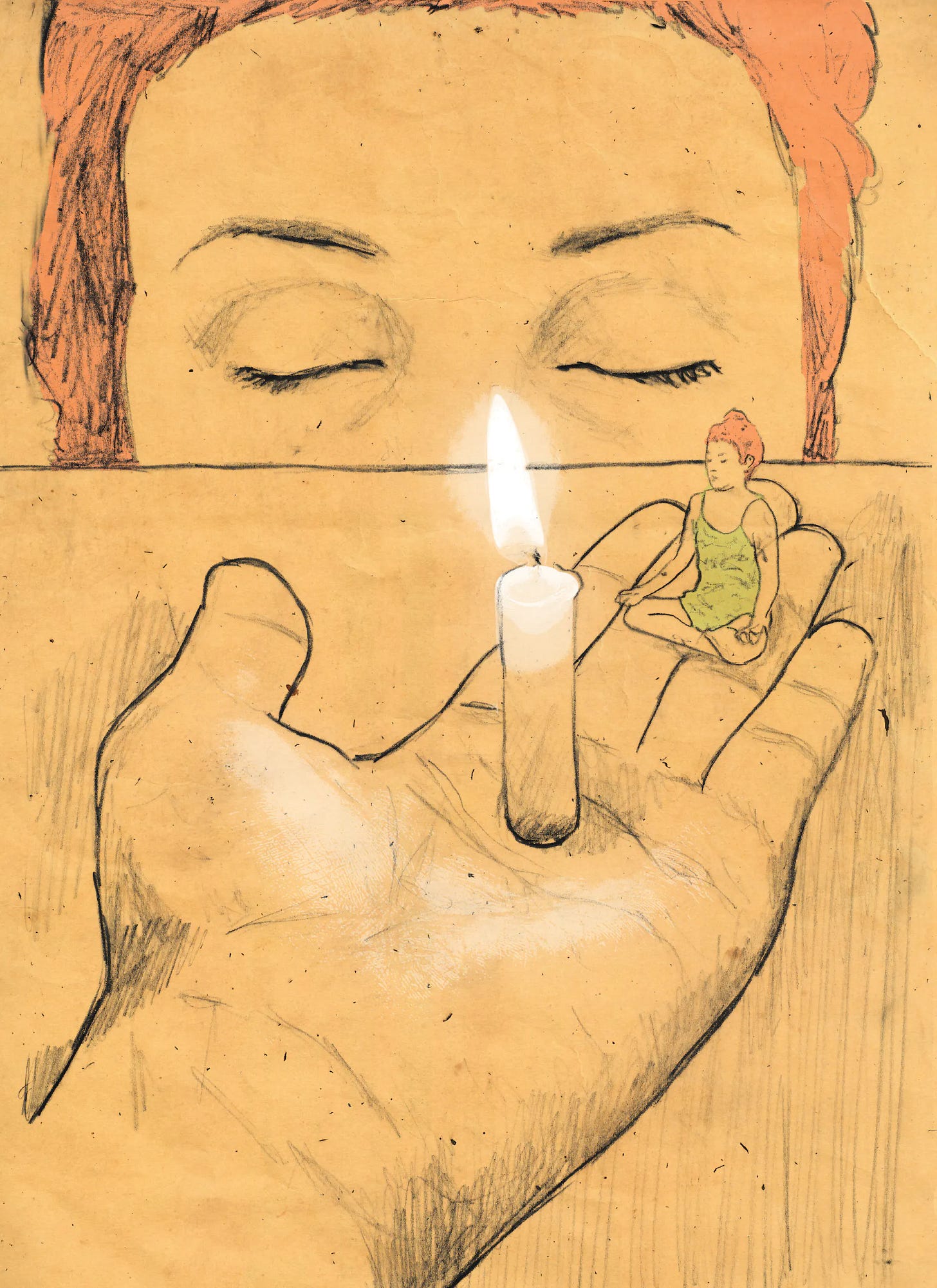The Inevitable Narrative Oozification of Expanded Media Universes
On The Future of Star Wars. Also: Dynamic NFTs, Three Legislatures, and more Casino Versus Japan
*This post contains spoilers for Ahsoka*
I finished watching Ahsoka this week and I loved it. It felt grounded in what makes Star Wars fun to watch (mythical found family sci-fi action), while actually taking leaps in pushing the boundaries a bit on what Star Wars is (by going to another galaxy and adding in new mythical elements to the live action series).
That being said, after reading Venkatesh Rao’s (Ribbonfarm Studio)post on Oozification, it made me wonder to what extent expanded media universes eventually fall prey to the same effect. In the context of narratives, I’m not always sure whether it’s a good thing.
If oozification is:
Oozification is the process of recursively replacing systems based on numerous larger building blocks, governed by many rules, with ones based on fewer, smaller building blocks, governed by fewer rules, thereby increasing the number of evolutionary possibilities and lowering the number of evolutionary certainties.
…then narrative oozification is the process where modern media IP inexorably containerises and protocolizes its story world in order to tell more stories. On the one side, this process of containerisation of the story world allows new writers to add to the world, but it also makes some of the foundations more rigid. It’s like a blockchain: you can only design new and interesting economic systems if some of its underlying components become hardcoded and immutable.
So, as the canon grows and more stories are told, more of the world need to become an API. It’s both an expectation of the consumers, but also a seeming necessity that gives writer rooms the ability to write new stories. Consumers want more of what they love and hold certain parts of the narrative as sacred. Writers also need guidance on what’s allowed and what’s not? Writers can’t pull a Michael Scott and have every improv scene turn into a guy with a gun.
So what are signs of narrative oozification in expanded media universes?
World building foundations become more rigid or explained.
Characters become APIs. Their impacts on the world become more predictable. Flanderization is a great example of this. Characters become more stereotyped versions of themselves. Less nuanced.
Stories are less about the world, and more about the characters. The environment impacts them less. Characters increasingly have less agency to change the world. New stories are often just character APIs thrown together.
Aesthetic/thematic innovation declines. It looks more the same over time.
It becomes increasingly self-aware of its own past, incorporating elements such as callbacks or rhyming story tropes.
It has to eventually reinvent itself.
In the case of Star Wars:
It’s stuck in a specific aesthetic vision. When I think of the Disney era of Star Wars, it’s been marked by what felt like a general desire to play safe with the IP, having the universe generally stuck in a certain aesthetic vision. This is in contrast to George Lucas that wanted the prequels to explicitly rethink what Star Wars looked like: it’s not always just 70s sci-fi junk console ships of the Millennium Falcon, but also high sci-fi sleek spaceships of Naboo. New visions is what he enjoyed doing. In another case, despite the wide, vast galaxy, we often go back to Tatooine.
All the live action TV series are focused on characters. It’s because with narrative oozification, it’s easier to focus on fewer characters vs broader ensemble arcs. Besides Solo, the films are focused on themes. Yes, they are ensemble casts in the TV series, but the focus is more singular. The Mandalorian, The Book of Boba-Fett, Obi-Wan Kenobi, Andor, Ahsoka.
Star Wars plays a lot with nostalgia and rhyming tropes. The latter isn’t necessarily bad, considering that Star Wars is already fundamentally influenced by Hero’s Journeys and inspirations from myth (eg, recently in Ahsoka: Norse mythology). Story templates are timeless. I think there’s a good way to do nostalgia that’s not just fan service, but actually drives the story forward. I enjoyed this more in Ahsoka than in The Mandalorian.
It’s become more rigid in its foundations. The introductions from OG to prequels to Clone Wars is more than the changes from prequels to sequels and live action. More of the innovation actually happened in the animations (like Clone Wars Mortis arcs or the Bendu and Purgill in Rebels).
What feels problematic in this narrative oozification is that even though it allows more stories to be told, true novelty that encompassed the wonder of the originals slowly goes away. It’s not that it isn’t impossible, it just becomes much much harder. If there is an attempt at trying something really new and it fails, there’s a strong retreat to sticking within the guardrails. I know the Last Jedi is always controversial, but I loved what it did in terms of re-imagining Star Wars. The lesson from TLJ should’ve been to keep going, not go back and play it safe.
The place where there is true creative freedom and exploration is in the non-canon, Visions. Truly wonderful re-imaginations of Star Wars.
This is by no means unique to Star Wars. Disney’s other mega IP, the MCU managed a massive streak of successes, to only recently starting to flounder a bit. It managed to do this really well, in part, because superheroes and comic books are already quite good playgrounds for oozified narratives. It’s very focused on characters that are already APIs. We watch them not for who they might become, but who they are.
In addition, narrative resets are common in superhero comic books. There’s alternate versions, alternate timelines, alternate groupings of characters. There’s an acceptance to canon fluidity that allows it to avoid stagnation.
Star Wars in its current form can still tell a lot of stories, but it feels inevitable that a narrative reset will come. The Force, after all, works in mysterious ways.
More Links!
The Design Space of Dynamic NFTs
I wish this blog from Nichanan was around last week on my article, NFTs Can’t Die! She wrote up an incredible compendium of Dynamic NFT projects that use the medium so well.
Today, most NFTs represent static assets. The immutability of its media and metadata is enforced either as a social agreement or through code. While this is sufficient for storing cultural artifacts designed to be unchanged (static art, music, writing, collectibles), there is a wide open design space for experimenting with dynamic onchain assets that continuously evolve their appearance, metadata, or state according to immutable rules.
Dynamism brings NFTs beyond static links and media, to behave more like software that responds to external factors. This creates new layers of interactivity around digital goods and media, enabling greater individual and collective expression, dynamic utility, and ongoing innovation around digital objects.
Legislature Mixes
It’s rare these days to find that established democracies want to change or reinvent their legislatures. I found this video detailing the history of Nebraska’s move to a unicameral legislature interesting.
I’ve been wanting to explore short stories that play with different legislatures. Like, in my novel Hope Runners of Gridlock, the city has a sortition-based citizens assembly detailing questions/commentaries about tax rates.
I generally wonder why we also haven’t explored more as a society of mixing more variations of legislatures. In democracies, it’s common two see two houses: usually a smaller senate and a larger house of representatives. But why not 3 or 4, and allow varying degrees of consensus? eg, 2-of-3 legislatures to pass regular bills. Constitutional changes requires 67% of 3-of-3, for example.
I’ve also always liked the idea of adding in sortition as a check on power of the politics class. eg, have 3 legislatures (2-of-3 to pass bills):
RCV on drawn districts. House of Districts.
Party-list proportional representation. House of Representatives.
Opt-in sortition of society. House of Citizens.
Something like that. There’s just a LOT more permutations here that’s still unexplored.
Do you have interesting vision for new legislature mixes?
Weekly Zora Mint
This week’s weekly Zora mint is from rogerin.eth, called ‘meditation piece’.
A simple meditative piece. It’s what I need right now.
If you mint it, this newsletter earns referral fees.
Casino Versus Japan - Slow Fade
Can you tell that I’m on a total Casino Versus Japan kick/binge still? 😂. Madly in love with his music atm.
Enjoy!
That’s it for this week. A bit shorter than usual. I’ve been quite busy the past 2 weeks as I’m heading down the final stretch to our wedding. It’s next week!! In all likelihood, because it’s next weekend and I’m travelling and having hands full with admin and wanting to spend time with family, friends and my wife, it’s going to probably be quite a short one. I’ll start endeavour to post something.
Till next week. Enjoy a sunset!
Simon




I’m glad you got to comic books. This has been happening in comics since the 60s!
I used to say that the Marvel and DC universes are the two largest, unified artistic collaborations of all time
Both of those worlds also have ways of adding in wildly different aesthetics and yet the fans can still handle seeing it all as a whole
I don’t think movie and tv writers trust viewers in the same way any more
Which is weird
Because some of the most beloved series in the 80s -- such as Indiana Jones -- barely make sense moment to moment
And yet folks loved them
I digress tho
My point is oozy fiction existed a long time in one way and it’s finally spreading
Wouldn’t mind this lens turned on what came before also - looking at you Timothy Zahn novels.